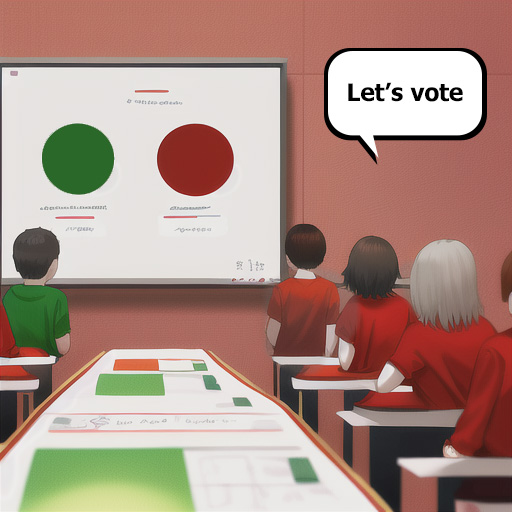I’ve worked in several Agile teams. I found out in general there are two kinds of Agile teams: the democracy and the dictatorship. The dictatorship is well known, but often denied. And even the teams who do it, know it is wrong. This is a team, where 1 person decides what is good or bad. This can be a person inside the team, like the scrum master, product owner, or senior employee. It can be someone outside the team, like a manager, a coach, or another type of Agile expert. A dictatorship is easy to recognize. While you have an Agile team, when you talk to people, they will still talk like they have no control over their work. But what about a democracy? What is it? And why do I believe this is wrong?
A democracy is a team where the opinion of team members is very important. The goal of the team is to make as many people happy as possible. Because of that, decisions are often made with the democracy principle. If most people want it, we are going to give it a try. If most people are against it, it is not going to happen.
That does sound very Agile, team in control, listening to everyone. So, what are the problems?
Teams aren’t evenly divided
Most teams have a lot of persons in the same function and in other functions just a few persons. Very often the developers will have the majority. To be clear: that doesn’t have to be a problem. There are a lot of developers that can understand the position of another function. Or can listen to problems or views they do not immediately recognize. This does cause problems when everyone starts focusing on their own problems. Then a situation will occur where not the biggest problems are going to be discussed, but the problems that bother the most people.
What is important, is that you recognize this situation. When retrospectives are mostly filled with “This is bothering me” and not “This is affecting the team in a bad way”, you have too much of a democracy. Then try to find a way to more objectively prioritize problems. How much negative effect does this problem have on the team, product, and process? How much time is wasted because of this problem? How difficult is it to solve this problem? Start talking in ways that are less dependent on a certain person and look more at the bigger picture.
An expert is never in the majority
When talking about change, you almost automatically get resistance. And that is easy. Every change has its downsides and risks. That does not automatically mean the change shouldn’t be done.
What happens in a group, is that people start mentioning the downsides and risks. That creates the idea of a “This change is bad” atmosphere. Why else would the majority be against it and only one person (often the expert) be for the change?
This might sound like me saying: “Just listen to the expert”. Well, no. I’ve seen many experts being wrong. And while I see myself as a QA expert, I know I have been wrong myself on QA topics.
When concerns and risks are mentioned, you should discuss them. If an expert is saying “That is not going to happen” or in any other way doesn’t take what is brought up seriously, you should listen to the majority. Even if the expert is right. If you are not able to take the risks and concerns mentioned seriously, people stay focussed on what goes wrong. And they will not be motivated to make it succeed. So the change will probably fail.
When discussing risks and concerns, you should weigh them against the benefits of the change. You should ask the expert how the risks and concerns can be prevented or reduced. And discuss how serious the problems are when they do occur. Make your decisions based on risks and benefits, not on risks alone.
Agile is searching for balance
Agile is knowing when to talk and when to listen. Agile is knowing when to give and when to take. If you mostly do one, and not the other, Agile isn’t going to work. But most of all is Agile about learning. Because getting that balance is difficult. It is about speaking up when you feel the balance is lost. It is about listening when another person feels the balance is lost. Finding a way where people might not always get what they want, but they do feel part of the team. No matter if they are the majority or the minority.

